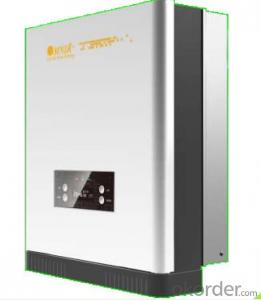Solar Hybrid Inverter On Grid
Solar Hybrid Inverter On Grid Related Searches
Led Light Bulbs For Ceiling Fixtures Led Lamps For Ceiling 42 In Ceiling Fan With Light Parts For Light Fixtures Light Projector For Christmas Grill With Led Light Bar Hanging Lights For Kitchen Bar Ceiling Lights For Sitting Room Ceiling Brackets For Lights Ceiling With Led LightsHot Searches
Aluminium Wire Mesh Manufacturers India Ceiling Fan Lowest Price Aluminium Scaffold Planks Sale Aluminium Walkway Mesh Prices Aluminum Bar Stock For Sale High Mast Light Price List Solar High Mast Light Specification High Mast Light Specification 6061 Aluminum Bar Stock Price Aluminum Bar Stock Price Stage Light Price Solar Inverter Fault Light Led Light Manufacturers Aluminum Round Bar Stock Sizes Aluminum Round Bar Stock Near Me Ceiling Fan Lowest Price Aluminum Flat Bar Stock Near Me Aluminum Bar Stock Sizes Aluminum Bar Stock Suppliers Aluminum Bar Stock Near MeSolar Hybrid Inverter On Grid Supplier & Manufacturer from China
Okorder.com is a professional Solar Hybrid Inverter On Grid supplier & manufacturer, offers integrated one-stop services including real-time quoting and online cargo tracking. We are funded by CNBM Group, a Fortune 500 enterprise and the largest Solar Hybrid Inverter On Grid firm in China.Hot Products
FAQ
- The role of a power management system in a solar inverter is to efficiently manage the flow of electricity from the solar panels to the grid or the connected devices. It ensures that the power generated by the solar panels is optimized, regulated, and synchronized with the grid's requirements. The power management system helps in maintaining the stability and reliability of the solar inverter system by monitoring, controlling, and adjusting the power flow, voltage levels, and frequency to prevent overloading or underutilization of the solar energy.
- What is the difference between a grid-connected inverter and an off-grid inverter? What are the advantages of a hybrid inverter?
- Offline generally need energy storage, not to send energy to the Internet. Grid has no right to interfere.
- The maximum number of parallel inverters that can be installed in a solar system depends on the specific requirements of the system and the available infrastructure. There is no fixed limit, as it varies based on factors such as the size of the system, the capacity of the inverters, the electrical load, and the design limitations. It is best to consult with a solar system designer or engineer to determine the optimal number of parallel inverters for a particular solar installation.
- Yes, a solar inverter can be integrated with smart home systems. Smart home systems allow for the monitoring and control of various devices and appliances in a home, and a solar inverter can be integrated into this system to provide real-time data on solar energy production, as well as the ability to remotely control and optimize the solar power usage in the home.
- A grid-tied solar inverter functions by converting the DC (direct current) electricity generated by solar panels into AC (alternating current) electricity that can be used to power homes or businesses. It synchronizes the AC electricity produced by the solar panels with the utility grid, allowing excess energy to be fed back into the grid for credit or compensation. The inverter also ensures the safety of the grid by continuously monitoring the voltage and frequency of the electricity produced.
- Yes, a solar inverter can be used in systems with different module orientations. Solar inverters are designed to convert the direct current (DC) generated by solar panels into alternating current (AC) for use in homes or businesses. They are compatible with various module orientations, including those that are east-west or south-facing. The inverter's maximum power point tracking (MPPT) technology allows it to optimize energy production regardless of the module orientation, ensuring efficient utilization of solar energy.
- Yes, a solar inverter can work in low light conditions. While the output power of a solar inverter may decrease in low light conditions, it is still capable of converting the available sunlight into usable electricity. The performance may vary depending on the specific model and technology used, but modern solar inverters are designed to work efficiently even in low light situations.
- To size a solar inverter for a solar power system, you need to consider the maximum power output of the solar panels and the total load you want to power. The inverter's capacity should be equal to or greater than the total power output of the solar panels to ensure efficient energy conversion. Additionally, you should also consider the voltage and current requirements of the load to ensure compatibility with the inverter. It is recommended to consult with a professional or use online sizing tools to accurately determine the appropriate inverter size for your specific solar power system.













































